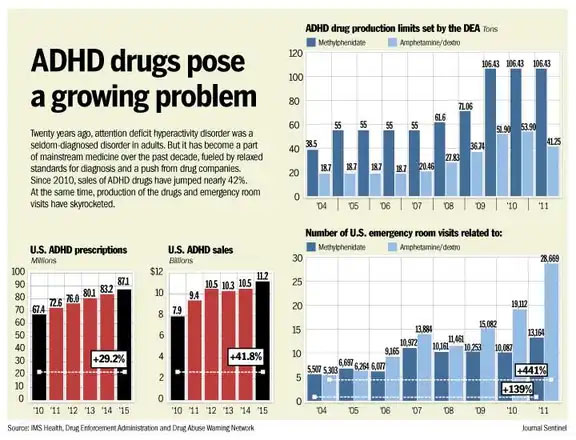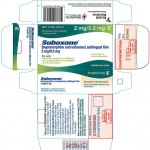If I were forced to nominate a class of drugs as a candidate for a future outbreak of abuse, I’d probably go with the prescription stimulants. That’s because American commercial enterprise seems to be doing its best to promote them.
Why prescription stimulants? Because of a substantial increase in the number of persons who have been diagnosed and treated for adult ADHD. Not all of them are prescribed these drugs, of course, but enough are to have an impact.
For the most part, medications used in ADHD treatment for adults are amphetamines. Those have always been popular drugs of abuse. Currently, an estimated 25% of prescription amphetamine users report misusing them, while 10% of those who misuse will also qualify for a substance use disorder diagnosis, related to their prescription drug use.
It helps to realize exactly how many Americans may be involved. As of 2023, approximately 15.5 million US adults had a current diagnosis of ADHD. Around a third of those — 5.2 million– acknowledged taking a prescription stimulant. If just 10% of those users (not a completely unreasonable estimate) go on to develop an SUD– well, that’s more than half a million people.
Here’s something on the subject from a pharmacy website:
Rising Trends in Stimulant Prescriptions
Most surprising: prescribing had increased most among people in their 70s.
It’s something to think about.
According to a Mayo Clinic publication, major indicators of ADHD in adults include:
- Impulsiveness
- Disorganization and problems prioritizing
- Poor time management skills
- Trouble multitasking
- Excessive activity or restlessness
- Poor planning
- Low frustration tolerance
- Frequent mood swings
- Problems following through and completing tasks
- Hot temper
- Trouble coping with stress
ADHD is often found in the company of other disorders, such as those involving mood and anxiety, PTSD, and personality. That complicates the task of differential diagnosis, where the most likely diagnosis must be identified from a list of potential candidates that share its symptoms.
It’s a process of elimination, not entirely different from what your mechanic does when identifying a tricky problem with your car’s electrical system.
I haven’t yet mentioned that a person with a moderate to severe SUD will often exhibit many of the symptoms listed above. “Addiction is the great mimic,” an expert once remarked. “At different times, it can resemble almost every other disorder in the DSM.”
Is it possible that adult ADHD is being overdiagnosed, or that prescription stimulants are being overused with vulnerable subpopulations, such as the elderly?
Well, sure, it’s possible. This might be a good time to double check.













